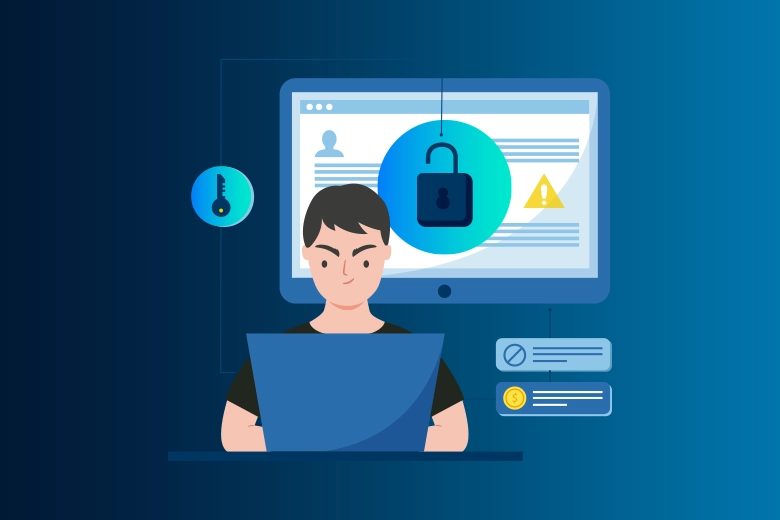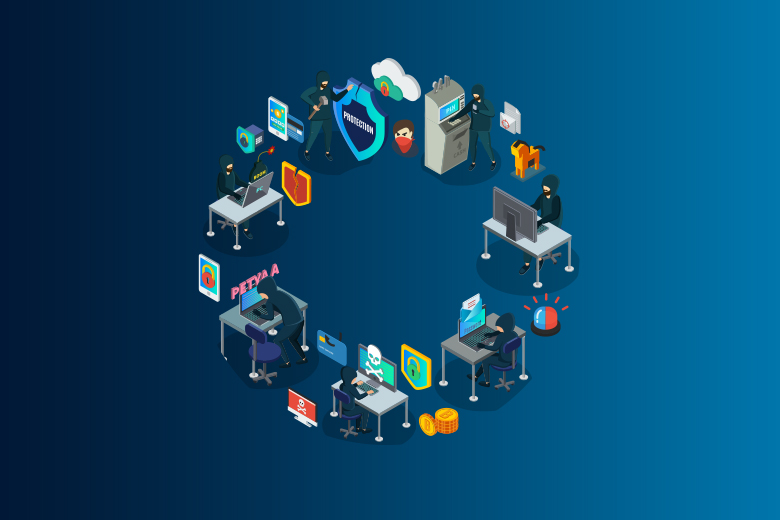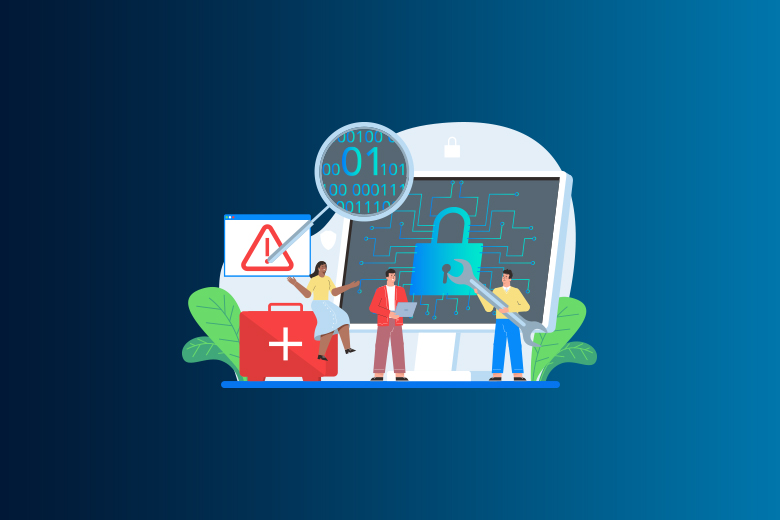22 November 2023
SafeAeon Inc.Using threat intelligence has become one of the most important parts of managing vulnerabilities well. With cyber threats getting smarter, it's more important than ever to find them and stop them in a thorough and proactive way. It's not enough to just respond to threats; you also need to plan for them, understand how they work and put plans in place to stop them. Businesses can move from a reactive to a proactive security stance by incorporating threat intelligence into vulnerability management processes. This makes it easier for them to respond quickly and effectively to cyber threats. In today's digital world, this method is very important because a security breach can cost more than just money; it can also hurt a company's reputation and trustworthiness.
How do you get Threat Intelligence?
Threat Intelligence is like a secret agent in the internet world. It's all about getting information about cyberattacks and making sense of it. This information is gathered and analyzed by people who work in cybersecurity to better understand and protect against these digital risks. Most of the time, this information includes:
- How an Attack Works: Figuring out how a cyberattack works.
- Being able to spot the signs that an attack is happening is called detection.
- Impact on Business: Being aware of how various types of strikes might harm a company.
- Defensive Actions: Useful tips on how to stay safe from these threats.
Threat intelligence helps businesses stay ready for these kinds of cyber dangers and keep them from spreading.
Learning About the Different Kinds of Threat Intelligence
There are different kinds of threat information, and each one is useful for different things in cybersecurity. Let's divide these types into parts that are easier to understand:
This is the big-picture view, with a focus on high-level, non-technical ideas that can help people who make decisions, like a board of directors. It means knowing how some business choices could make cyberattacks more likely. As an example, it looks at the possible online risks that come with starting a new business.
This kind of danger intelligence goes into great detail about how cyber threats work. This talks about the ways, tools, and infrastructure that attackers use, as well as the technologies or businesses that they target and how to protect yourself from them. Cybersecurity experts need this kind of information in order to make good defense plans and security controls.
This is the information that IT departments use to actively handle threats. It's called operational threat intelligence. It gives us clues about the purpose, structure, and timing of certain attacks. This information usually comes straight from the attackers, which makes it very useful for fighting ongoing threats even though it's hard to get.
Indicators of infection (IOCs) and other physical proof of an attack are examples of technical threat intelligence. These signs can be found in phishing emails, IP addresses that are related to attacker infrastructures, or traces of known malware. Some advanced threat intelligence tools even use artificial intelligence to find them.
101 With Vulnerability Management
There's more to managing risks well than just scanning your network. It's about being aware of what and where to check. This includes looking for holes in websites, apps, ports, IoT devices, mobile phones, and other places where people can get into your company's IT system from outside and inside.
This process should be overseen by a certified defensive security professional. They know how to find security risks and make them less dangerous.
How do you do an evaluation of security risks?
Always keep in mind that the main goal of a Vulnerability Management Program is to the lower risk. In order to do this, a formal security risk review must be done while the program is being made. It helps you make a plan that fits the needs of your business.
However, it's not just looking and giving a grade. Different areas must be involved in a well-rounded program in order to find and rank the most important assets based on how vulnerable they are.
Who should be a part of making the program?
For risk management to work, it needs to be supported by the top leaders. They play a big role in making policies, dealing with budget issues, and getting everyone in the business to back them.
Multiple teams must work together to put in place a Vulnerability Management Program. One team might be in charge of the tool or service, but IT teams and non-IT teams, such as business partners, legal, and financial teams, must also be involved.
Their help makes it easier to see how fixing flaws affects more than just the vulnerabilities themselves. It affects budgets, users, compliance, and more.
More departments should be involved than less, especially if the program could pose a risk to a lot of people. To make sure that a comprehensive cybersecurity strategy works and doesn't cost too much, it's important to include the whole company.
Vulnerability management ensures end-to-end Solutions. You'll always know what's going on with your system because it gives you full coverage and constant view. It checks for vulnerabilities and bad settings based on risk and fixes them all from a single console.
- Workstations, computers, servers, virtual machines, web servers, and databases are all endpoints that need to be protected.
- Get a single, continuous view of your distributed IT, no matter where your users are located.
- Find flaws, misconfigurations, risky software, and a lot more automatically.
- Don't just look at CVSS numbers. Place vulnerabilities in order of importance based on their age, ease of use, and effect.
- You can fix bugs and fix wrong settings with the click of a button.
- Quickly find zero-day flaws and use workarounds to protect against them.
- Patching for Windows, macOS, and Linux can be automated and changed to fit the needs of your company. With near-real-time dashboards, you can see your protection from a high level.
How to Make a Strong Vulnerability Management Framework in 7 Steps?
Step 1: Make a list of everything
The first thing you need to do is figure out how big your company's technology world is. Knowing what tech and devices you have and where they are stored is very important. This includes computers, workstations, laptops, and anything else on your network. Important questions to ask include whether the company uses Macs or PCs, how many mobile devices can connect to a VPN, and where the data centers are located. These questions help map out and write down possible weaknesses.
Step 2: Sort Vulnerabilities into Groups
The second step is to find weaknesses and put them into groups. Most of the time, this is done by scanning the network and apps for security holes. These scans can be done daily, weekly, or monthly, depending on what the client wants. The risks are then put into groups based on the asset and the amount of severity (High, Medium, or Low) of the vulnerability. This step is important for setting priorities for fixing things and gives useful measures for getting more detailed information over time.
Step 3: Put together the packages
In this step, you will gather and look over the data to see what needs to be fixed. It is important to look into patch dependencies and make sure that all changes are fully tested. To find the best balance between the highest reward and the lowest risk for production systems, an impact study should be carried out.
Step 4: Check the Box
>Before putting the fixes into action, try the recovery plans on systems that aren't in production or that aren't as important. Watch and report the performance results after the patch, and look over the results to make sure they were successful and safe.
Step 5: Set up a way to handle change
Once testing is complete, let the right people know what needs to be done to patch. Write down the risks and make a plan B. Then, get key partners' approval for the production rollout.
Step 6: Use patches to fix bugs
Now is the time to start fixing things by patching. Use tools to plan when to deploy patches, and think about a Waterfall rollout to keep business effects to a minimum. Let people know about any possible service interruptions.
7. Give a report on the results
The last step is to evaluate the results after the plan has been put into action. Look at the results, suggest any corrective measures that might be needed, and give reports with useful data. Also, people should be responsible for the process and the outcomes.
Conclusion
Not only is it smart, but it's also necessary to combine threat intelligence with risk management. Organizations can predict, find, and stop possible cyber threats before they happen by using threat intelligence for effective vulnerability management. This method changes risk management from a reactive to a proactive mode, which helps companies stay ahead of their cyber attackers.
Adding threat intelligence to vulnerability management is a must for companies that want to improve their defenses against a threat landscape that is getting smarter and changing all the time. Investing in the safety and purity of a company's digital infrastructure is a smart move that will help it stay strong against new cyber threats. This kind of integration with the help of SafeAeon will definitely become an important part of strong protection plans.














